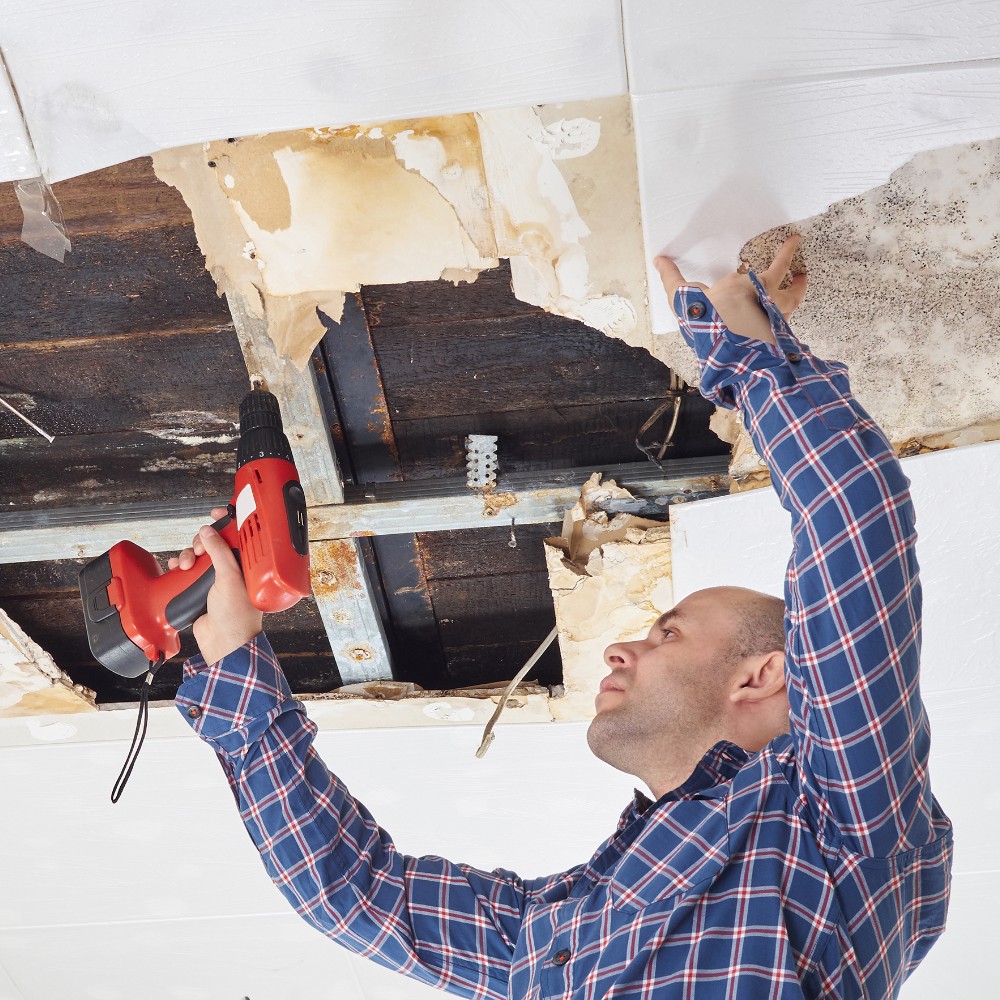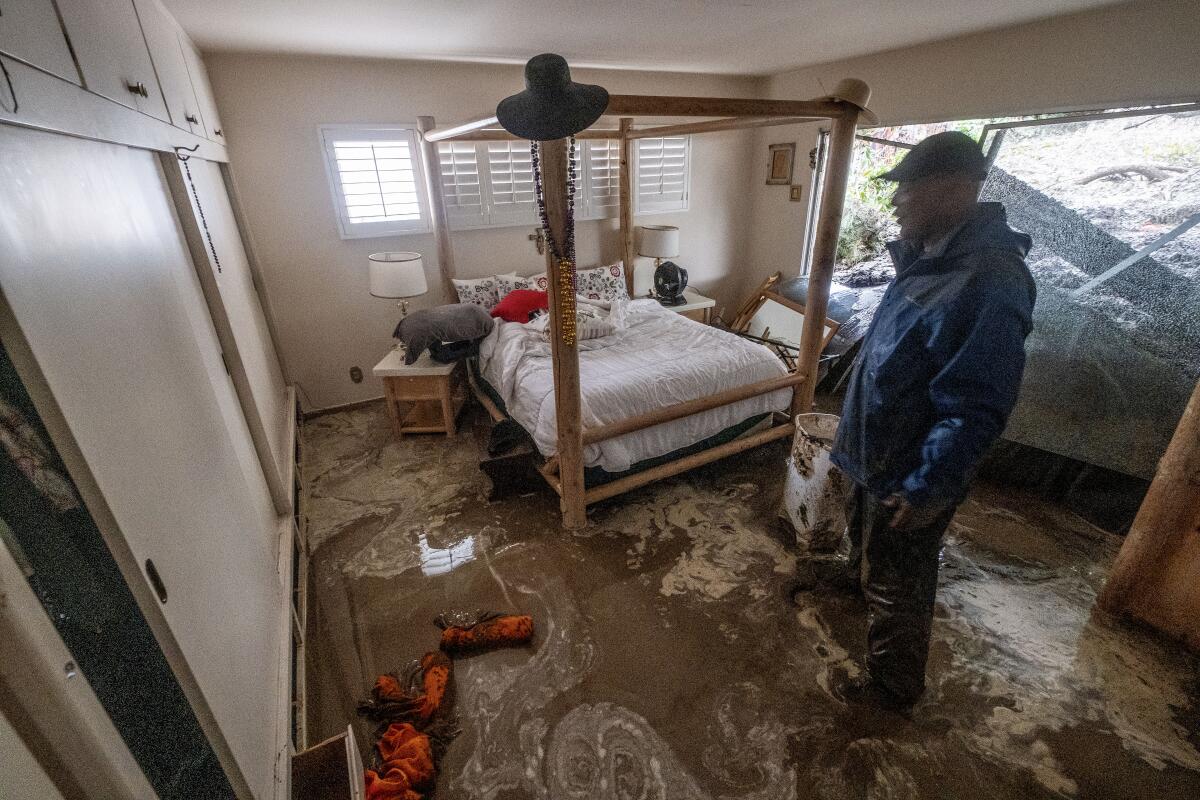The Refine of Water Damages Cleanup: Guaranteeing Your Home Is Restored Properly
Water damage can be a difficult difficulty for homeowners, requiring a organized and thorough cleanup procedure to recover security and functionality. damage restoration services. Following this, reliable water removal techniques play a critical duty in mitigating further harm.
Examining the Damage
Upon discovering water damage, the very first step is to thoroughly examine the level of the effect. This initial evaluation is important, as it helps identify the needed steps for efficient cleaning and repair. Begin by inspecting the affected locations, including walls, ceilings, floors, and personal valuables, to recognize the resource of the water intrusion, whether from flooding, leaks, or condensation.
Recording the damages is important for both insurance coverage claims and preparing repair efforts - damage restoration services. Use photographs and composed notes to record the severity of the damage, noting any kind of affected structural components and materials. Pay special attention to locations that might not be promptly visible, such as behind wall surfaces and under carpets, as concealed dampness can result in additional difficulties, including mold development
Furthermore, evaluate the timeline of the water direct exposure. Ultimately, a comprehensive assessment lays the foundation for an effective water damages clean-up procedure, making certain that all impacted areas are addressed properly and completely.
Water Removal Methods

Experts generally utilize completely submersible pumps for larger quantities of water, which can promptly alleviate flooding in cellars or other affected locations. For smaller quantities, wet/dry vacuum cleaners are often made use of to extract residual wetness from carpetings and difficult surfaces. Additionally, utilizing mobile extractors enables for targeted removal in restricted rooms or locations with delicate products.
In circumstances of infected water, such as sewer or floodwater, progressed extraction methods might include using biohazard tools to make certain safety and security and conformity with health and wellness laws. High-powered removal tools are vital in reducing water retention in architectural materials, which can result in mold growth and architectural wear and tear if not addressed promptly.
Ultimately, the efficiency of water removal methods plays a critical function in the total success of the water damage clean-up process, preparing for succeeding restoration initiatives.
Drying and Dehumidification
When standing water has been successfully drawn out, the following important stage in the water damage clean-up procedure is drying out and dehumidification. This step is vital to prevent more damages and mold and mildew development, which can take place within 24 to 2 days in moist settings.
To attain reliable drying out, customized equipment such as industrial-grade air moving companies and dehumidifiers is employed. Air moving companies circulate air across damp surface areas, enhancing dissipation rates, while dehumidifiers decrease moisture degrees in the air, promoting a helpful environment for drying out. The mix of these tools ensures that dampness is attracted out from walls, floorings, and furnishings, permitting them to dry extensively.
It is essential to keep track of the drying out process carefully. Experts usually utilize dampness meters to analyze the wetness web content in various materials, making sure that all impacted locations get to acceptable dryness levels. This thorough strategy helps to avoid surprise wetness pockets that might bring about structural damages or undesirable mold development.

Cleaning and Sterilizing
After the drying out and dehumidification stage is complete, the following vital action in water damages clean-up is cleaning up and disinfecting the impacted locations. This procedure is vital to protect against the helpful site development of mold, bacteria, and various other virus that thrive in wet atmospheres.
The cleaning stage normally involves eliminating any particles, dirt, and pollutants from surfaces utilizing specialized cleaning up representatives. For difficult surfaces, a mix of soap and water or industrial cleansing items is often employed. Soft products, such as upholstery and rugs, might need more comprehensive cleansing techniques, including heavy steam cleansing or deep extraction techniques, to ensure comprehensive cleanliness.

Sterilizing complies with cleansing, utilizing EPA-approved disinfectants to eliminate damaging bacteria. This action is important, especially in locations that may have entered dry basement call with floodwaters or sewer, as these resources can pose significant health and wellness dangers.
Furthermore, it is essential to attend to any type of remaining smells, which might require the usage of smell neutralizers or innovative strategies like ozone therapy. Correct cleansing and disinfecting not only recover the safety and health of your home however additionally prepared for effective remediation and repair services in subsequent stages of the water damage cleaning process.
Repair and Repairs

When the assessment is complete, remediation initiatives can begin. This usually entails fixing or changing damaged materials, making certain that all work conforms with local building ordinance and standards. For example, if drywall has actually been endangered, it will certainly require to be gotten rid of and replaced with new material. In addition, flooring might call for similar interest, depending upon the degree of water exposure.
It is critical to involve skilled restoration experts during this procedure, as they possess the competence to deal with complex repair work properly. They can assist minimize potential future problems, such as mold development or structural instability, therefore making sure a safe and habitable living setting. Eventually, efficient repair and repair work recover the home's honesty and boost its general value.
Final Thought
Finally, the process of water damages cleaning is crucial for recovering a home to its pre-damage condition. Each phase, from examining the damage to executing reliable water extraction methods, complied with by extensive drying out, sanitizing, and necessary repair services, plays an important role in making certain safety and conformity with structure criteria. Effective implementation of these steps not just mitigates immediate damage however also enhances the long-lasting integrity and value of the building.
Water damages can be a complicated obstacle for home owners, requiring a structured and precise cleaning procedure to recover security and capability. Ultimately, a thorough analysis lays the foundation for a successful water damages clean-up process, making sure that all influenced locations are attended to effectively and thoroughly.
Reliable water extraction strategies are necessary in reducing damage and preventing further complications complying with a water breach event.In final thought, the process of water damage clean-up is important for bring check my reference back a home to its pre-damage condition. Each phase, from analyzing the damages to executing reliable water removal techniques, complied with by extensive drying out, disinfecting, and necessary fixings, plays a vital duty in ensuring safety and security and conformity with building requirements.